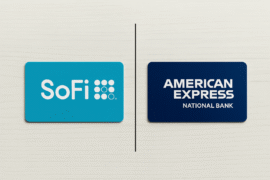This article may contain references to products or services from one or more of our advertisers or partners. We may receive compensation when you click on links to those products or services. Nonetheless, our opinions are our own.
When it comes to planning for your retirement, two popular options often come to mind: pensions and 401(k) plans. Navigating these choices can feel overwhelming, especially considering so many factors. Each has its features, benefits, and potential drawbacks that can substantially impact your financial future. We will provide a side-by-side comparison of pensions and 401(k)s, helping you understand how these retirement plans work and which one might best fit your unique situation. Whether you’re just starting your career or nearing retirement age, having a clear grasp of these options will empower you to make informed decisions for a financially secure future. Let’s dive in and see how pensions stack up against 401(k) plans!
Understanding the Basics of Pension Plans and 401(k) Accounts
Pension plans and 401(k) accounts are two of the most common retirement savings options, and understanding their differences is essential for effective financial planning. A pension plan, often provided by employers, guarantees a set income in retirement based on your salary and years of service. Think of it as a safety net; you don’t have to worry about how the market performs, as your benefits are predetermined.
In contrast, a 401(k) account is a defined contribution plan where you contribute a portion of your salary, often with your employer matching a percentage. This means your retirement amount largely depends on your contributions and investment choices.
Key Differences Between Pensions and 401(k)s
| Aspect | Pension Plan | 401(k) Account |
|---|---|---|
| Type | Defined Benefit | Defined Contribution |
| Investment Control | Employer | Employee |
| Benefit Security | Guaranteed | Variable |
| Withdrawal Flexibility | Limited | More Flexible |
| Portability | Limited | Can be rolled over |
Understanding these nuances can empower you to make informed decisions about your retirement strategy. By weighing the stability offered by pensions against the flexibility of 401(k)s, you can better align your retirement savings with your personal financial goals.
Evaluating Contributions and Employer Matching Opportunities
When considering your retirement savings options, one key factor to evaluate is how much you can contribute and whether your employer offers matching opportunities. Both pensions and 401(k)s have distinct advantages.
With a 401(k), you typically can choose your contribution level, often up to a specific percentage of your salary or a maximum dollar amount dictated by the IRS. A 401(k) ‘s primary advantage is if your employer matches your contributions, often up to a certain percentage. This is essentially “free money” that can amplify your retirement savings.
Employer Matching Strategies
| Employer Match Type | Description |
| Flat Percentage Match | Your employer matches a fixed percentage of your contributions (e.g., 50% up to 6% of your salary). |
| Tiered Match | Your employer matches differently based on your contribution percentage (e.g., 100% for the first 3%, 50% for the next 3%). |
| No Match | Some employers do not offer matching, so your contributions depend solely on your own inputs. |
Taking full advantage of any employer matching plan can significantly increase your retirement fund over time. Understanding the matching structure and aiming to contribute at least enough to capture the full employer match is crucial. This approach maximizes your retirement savings and positions you better for your financial future.
Exploring Withdrawal Rules and Retirement Income Options
Understanding withdrawal rules and income options is essential when comparing conventional pension plans to 401(k) accounts. With a pension, you typically receive a guaranteed monthly income for life, calculated based on your salary and years of service. This predictability provides peace of mind since market fluctuations do not impact your income.
However, with a 401(k), you have more flexibility and control over your funds, which also means being responsible for managing withdrawals. You can choose to take lump-sum distributions or spread out withdrawals, though it’s crucial to consider tax implications and longevity needs.
Key Differences in Withdrawal Options
| Factor | Pension Plan | 401(k) Plan |
| Payment Structure | Fixed monthly payments | Variable withdrawals |
| Investment Risk | Employer-managed | Employee-managed |
| Longevity Risk | Lower risk | Higher risk |
| Taxation upon Withdrawal | Generally taxed as income | Subject to tax bracket rates |
As you navigate these withdrawal options, consider your lifestyle preferences and risk tolerance. Whether leaning towards the stability of a pension or the flexibility of a 401(k), understanding these aspects can help you establish a strategy that aligns with your retirement goals.
Making Informed Decision: Which Option Fits Your Lifestyle?
When choosing between a pension and a 401(k), consider how each option aligns with your lifestyle and financial goals. A pension typically offers guaranteed income in retirement, providing peace of mind and stability, especially if you value predictable expenses and long-term security. This option might suit you if you plan to stay with the same employer for a long time or if you work in a profession that typically offers such benefits, like government jobs or teaching.
Conversely, a 401(k) allows you more control over your retirement savings. You can contribute a portion of your earnings and potentially receive employer-matching contributions, significantly boosting your retirement savings. This might be ideal if you prefer flexibility in how much you save since you can adjust contributions based on your financial situation.
Comparison of Key Features
| Feature | Pension Plan | 401(k) Plan |
| Payment Structure | Fixed monthly income | Variable withdrawals based on savings |
| Employer Duty | Employer-funded | Employee-funded with potential employer match |
| Investment Control | No control over investments | Choose your investments |
| Risk | Low (employer bears risk) | Higher (you bear investment risk) |
Both options have advantages and disadvantages. You should evaluate your career stability, retirement goals, and risk tolerance to determine which best fits your financial strategy. Whether opting for the guaranteed safety of a pension or the growth potential of a 401(k), being proactive can set you on a path toward a secure retirement.
Frequently Asked Questions
What is the primary difference between a pension and a 401(k)?
Pensions are employer-sponsored retirement plans that provide a guaranteed income to retirees based on factors like salary and years of service. In contrast, a 401(k) is a defined contribution plan where employees save their own money, often supplemented by employer contributions, leading to a retirement fund that varies based on investments and contributions.
How is each plan funded?
Pensions are primarily funded by the employer, who takes on the investment risk and is responsible for ensuring enough funds to meet future obligations. However, a 401(k) is funded primarily by employee contributions, often supplemented by employer matching contributions, with the employee bearing the investment risk.
What happens if I change jobs?
If you change jobs, pension benefits may not be fully vested immediately and could be lost if you haven’t met the required tenure. With a 401(k), you typically can roll over your savings into a new employer’s plan, an IRA, or withdraw it (with potential tax penalties).
Can I access my retirement funds early?
Accessing funds early from a pension is often limited and can incur penalties, depending on the plan’s rules. Early withdrawals are allowed for a 401(k) but are typically subject to income tax and a 10% penalty unless certain conditions are met.
By understanding the key differences and evaluating your financial goals, you can make informed choices that lead to a secure and comfortable retirement.

Reviewed and edited by Albert Fang.
See a typo or want to suggest an edit/revision to the content? Use the contact us form to provide feedback.
At FangWallet, we value editorial integrity and open collaboration in curating quality content for readers to enjoy. Much appreciated for the assist.
Did you like our article and find it insightful? We encourage sharing the article link with family and friends to benefit as well - better yet, sharing on social media. Thank you for the support! 🍉
Article Title: Pension vs 401(k): Side-by-Side Comparison
https://fangwallet.com/2025/03/01/pension-vs-401k-side-by-side-comparison/The FangWallet Promise
FangWallet is an editorially independent resource - founded on breaking down challenging financial concepts for anyone to understand since 2014. While we adhere to editorial integrity, note that this post may contain references to products from our partners.
The FangWallet promise is always to have your best interest in mind and be transparent and honest about the financial picture.
Become an Insider

Subscribe to get a free daily budget planner printable to help get your money on track!
Make passive money the right way. No spam.
Editorial Disclaimer: The editorial content on this page is not provided by any of the companies mentioned. The opinions expressed here are the author's alone.
The content of this website is for informational purposes only and does not represent investment advice, or an offer or solicitation to buy or sell any security, investment, or product. Investors are encouraged to do their own due diligence, and, if necessary, consult professional advising before making any investment decisions. Investing involves a high degree of risk, and financial losses may occur including the potential loss of principal.
Source Citation References:
+ Inspo












































